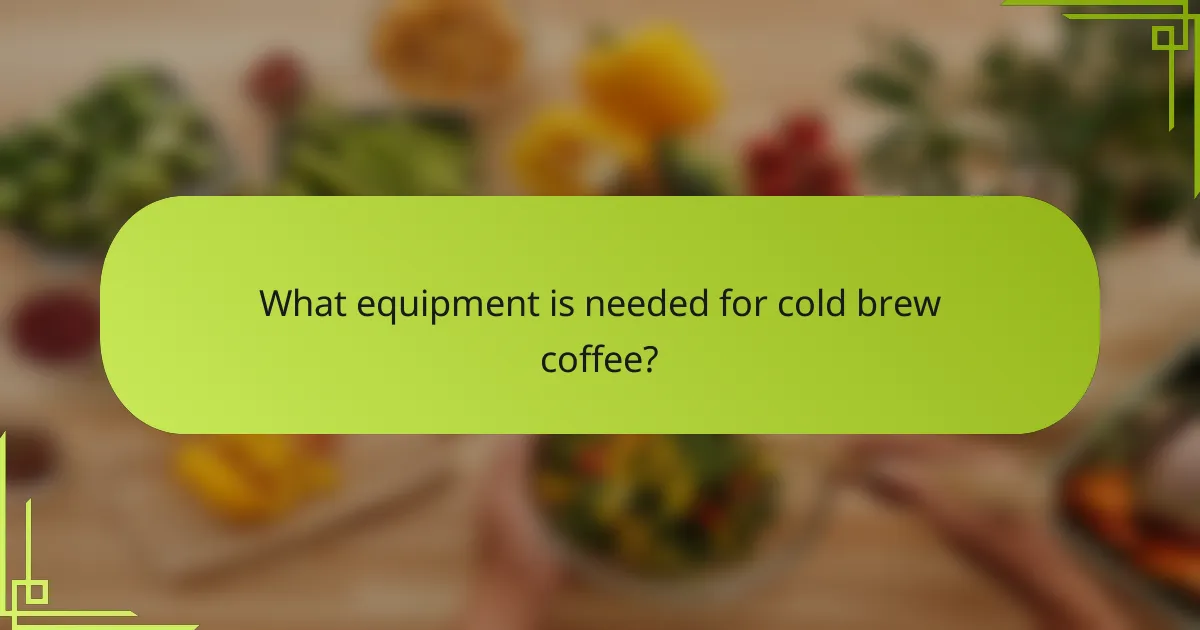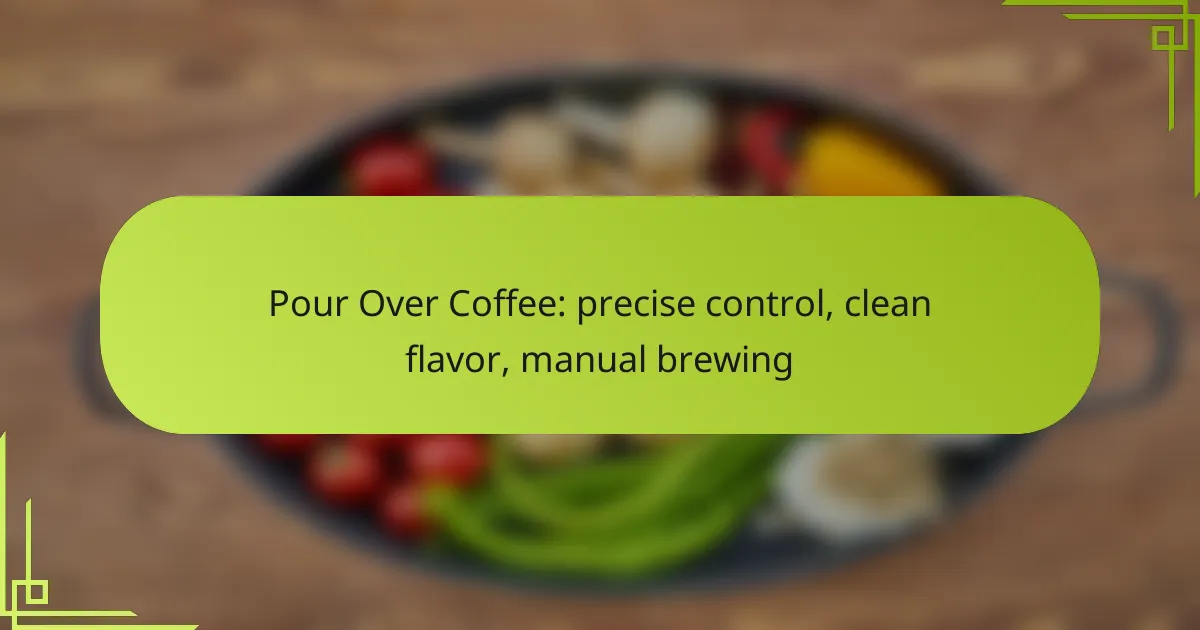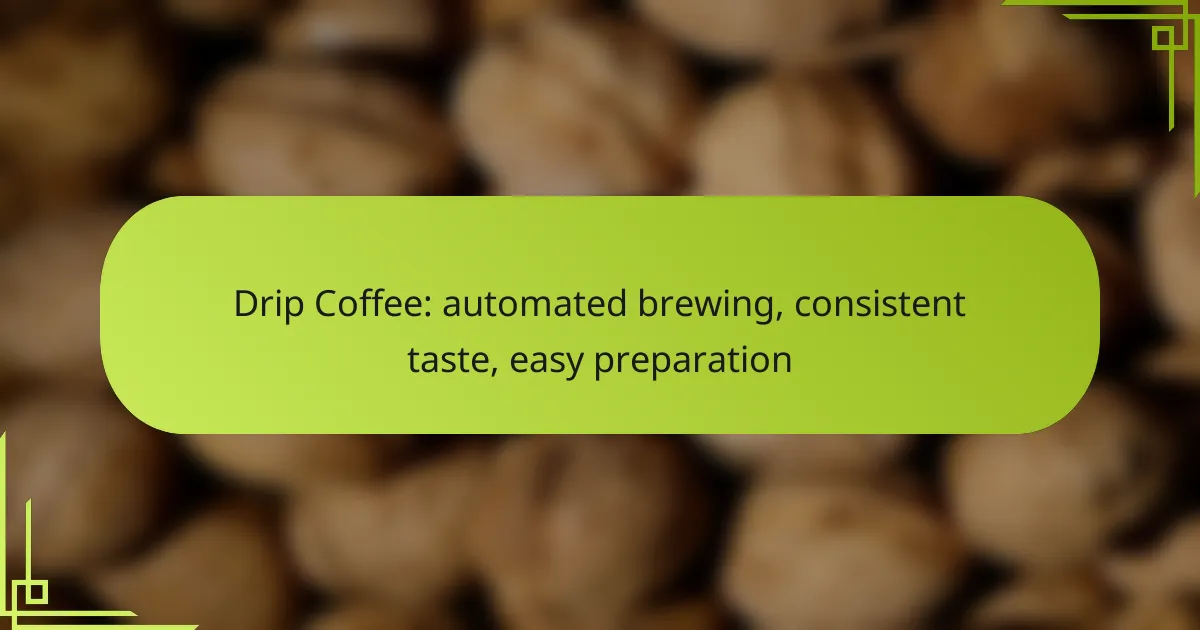Cold brew coffee is a refreshing alternative to traditional brewing methods, characterized by its long steeping process that extracts rich flavors while maintaining low acidity. By steeping coarsely ground coffee in cold water for 12 to 24 hours, you achieve a smooth, mellow taste that many coffee enthusiasts prefer. This method not only enhances the coffee’s natural sweetness but often results in a higher caffeine content, making it an appealing choice for those seeking a less bitter beverage.

How to make cold brew coffee at home?
Making cold brew coffee at home is simple and requires just a few ingredients and tools. The process involves steeping coarsely ground coffee in cold water for an extended period, resulting in a smooth, low-acidity beverage.
Cold brew coffee maker
A cold brew coffee maker is a specialized device designed to simplify the brewing process. These makers typically consist of a container for water and a filter for coffee grounds, allowing for easy separation after steeping.
To use a cold brew coffee maker, fill the container with coarsely ground coffee and cold water, then let it steep for about 12 to 24 hours. After steeping, simply remove the filter to enjoy your coffee.
French press method
The French press method is another effective way to make cold brew coffee. Start by adding coarsely ground coffee to the French press, using a ratio of about 1 cup of coffee to 4 cups of cold water.
Mix the grounds and water, then let it steep for 12 to 24 hours in the refrigerator. After steeping, press down the plunger to separate the grounds from the coffee, and pour your cold brew into a glass.
Jar steeping technique
The jar steeping technique is a straightforward method that requires minimal equipment. Combine coarsely ground coffee and cold water in a large jar, using a similar coffee-to-water ratio as the French press method.
Seal the jar and let it steep at room temperature or in the fridge for 12 to 24 hours. Once steeped, strain the mixture through a fine mesh sieve or coffee filter to remove the grounds, leaving you with smooth cold brew coffee.

What are the benefits of cold brew coffee?
Cold brew coffee offers several benefits, including low acidity, a smooth taste, and often higher caffeine content compared to traditional brewing methods. These characteristics make it a popular choice for coffee lovers seeking a refreshing and less bitter beverage.
Low acidity
One of the main benefits of cold brew coffee is its low acidity, which can be gentler on the stomach and teeth compared to hot brewed coffee. The cold steeping process extracts fewer acidic compounds, resulting in a smoother experience. This makes cold brew an excellent option for those sensitive to acidity or prone to acid reflux.
For those looking to reduce acidity in their diet, cold brew can be a great alternative. It typically has a pH level around 6.0 to 6.5, which is significantly lower than that of hot brewed coffee, often ranging from 4.5 to 5.0.
Smooth taste
Cold brew coffee is renowned for its smooth and mellow flavor profile. The long steeping process, usually between 12 to 24 hours, allows for a gradual extraction of flavors, resulting in a less bitter and more balanced cup. This makes it appealing to those who may find traditional coffee too harsh or acidic.
To enhance the smoothness, consider using coarsely ground coffee beans and filtered water. This combination helps to avoid over-extraction, which can lead to undesirable flavors. Experimenting with different coffee-to-water ratios can also help you find your preferred taste.
Higher caffeine content
Cold brew coffee generally contains higher caffeine levels than hot brewed coffee, making it a potent choice for those needing an extra boost. Depending on the brewing method and coffee-to-water ratio, cold brew can have about 1.5 to 2 times the caffeine concentration of traditional coffee.
When preparing cold brew, using a higher coffee-to-water ratio can increase the caffeine content. For example, a common ratio is 1:4 for a concentrated brew, which can then be diluted with water or milk to taste. This flexibility allows you to customize your caffeine intake based on your preferences.

What is the ideal steeping time for cold brew?
The ideal steeping time for cold brew coffee typically ranges from 12 to 24 hours. This duration allows the coffee grounds to extract flavors while minimizing acidity, resulting in a smooth and rich beverage.
12 hours
To achieve the best results, use coarsely ground coffee and cold or room temperature water. The ratio of coffee to water can be adjusted based on personal taste, but a common starting point is 1:4.
24 hours
Steeping cold brew for 24 hours yields a richer and more robust flavor. This longer extraction time enhances the coffee’s depth and complexity, making it ideal for those who enjoy a stronger taste. However, be cautious, as over-extraction can lead to bitterness.
For a 24-hour steep, maintain the same coffee-to-water ratio, but feel free to experiment with slightly different amounts to find your perfect balance. Ensure the mixture is kept in a cool, dark place to prevent any unwanted flavors from developing.
Factors affecting steeping time
Additionally, water temperature plays a role; colder water extracts flavors more slowly than warmer water. If you prefer a quicker brew, consider using room temperature water. Lastly, your individual taste will ultimately guide the ideal steeping time, so don’t hesitate to experiment.

How does cold brew compare to iced coffee?
Cold brew coffee is made by steeping coarsely ground coffee in cold water for an extended period, resulting in a smooth, low-acidity beverage. In contrast, iced coffee is brewed hot and then cooled down, often leading to a more bitter taste.
Brewing methods
Cold brew coffee requires a steeping process that typically lasts 12 to 24 hours, using a ratio of about 1:4 coffee to water. This method allows for a gentle extraction of flavors without the bitterness associated with hot brewing. Iced coffee, on the other hand, is brewed quickly using hot water and then chilled, usually by pouring it over ice.
Taste differences
The flavor profile of cold brew is generally smoother and less acidic than iced coffee, making it more palatable for those sensitive to acidity. Cold brew often has chocolatey or nutty notes, while iced coffee can have a brighter, more acidic taste due to the hot brewing process. Personal preference plays a significant role in choosing between the two, as some may prefer the boldness of iced coffee.
Caffeine levels
Cold brew coffee tends to have higher caffeine content per ounce compared to iced coffee, primarily due to the longer steeping time and coffee-to-water ratio. A typical serving of cold brew may contain around 100 to 200 mg of caffeine, while iced coffee usually has about 80 to 120 mg per serving. However, serving sizes can vary widely, so it’s essential to check specific brands or recipes for accurate caffeine levels.

What equipment is needed for cold brew coffee?
To make cold brew coffee, you need a few essential pieces of equipment that facilitate the long steeping process. The right tools ensure a smooth taste and low acidity, which are hallmarks of this brewing method.
Cold brew coffee maker
A cold brew coffee maker is specifically designed for steeping coffee grounds in cold water over an extended period. These makers often come with a built-in filter, making the brewing process more convenient. You can choose from various styles, including immersion brewers and drip systems, depending on your preference.
When selecting a cold brew coffee maker, consider the capacity. Many models can brew anywhere from a few cups to several liters, allowing you to prepare enough coffee for multiple servings or a week’s worth of drinks.
Filters
Filters are crucial for separating the coffee grounds from the brewed liquid. Many cold brew makers include a filter, but you can also use paper or metal filters if you prefer. Paper filters tend to create a cleaner taste, while metal filters allow more oils and flavors to pass through.
Ensure that the filter you choose fits well with your brewing method. A good filter will prevent sediment from entering your final brew, resulting in a smoother cup of coffee.
Storage containers
After brewing, you’ll need storage containers to keep your cold brew fresh. Glass jars or bottles are ideal, as they do not impart flavors and are easy to clean. Aim for containers that can hold at least a few cups to avoid frequent refills.
Consider using airtight containers to maintain the coffee’s flavor and prevent oxidation. Cold brew can last in the refrigerator for about one to two weeks, so proper storage is key to enjoying it at its best.

What are popular cold brew coffee brands?
Several brands stand out in the cold brew coffee market, known for their smooth taste and low acidity. Popular choices include Stumptown Cold Brew and Blue Bottle Coffee, both offering unique flavors and brewing methods.
Stumptown Cold Brew
Stumptown Cold Brew is renowned for its rich flavor profile and smooth finish. Made from high-quality, coarsely ground coffee beans steeped in cold water for an extended period, it results in a less acidic beverage that appeals to many coffee lovers.
Available in various formats, including ready-to-drink bottles and concentrate, Stumptown allows for flexibility in preparation. The brand emphasizes using ethically sourced beans, which adds to its appeal among conscious consumers.
Blue Bottle Coffee
Blue Bottle Coffee offers a distinctive cold brew that highlights the natural sweetness of its beans. Their cold brew is crafted using a meticulous brewing process that balances flavor and acidity, making it a favorite for those seeking a smooth coffee experience.
Blue Bottle’s cold brew is typically available in ready-to-drink cans or as a concentrate, providing options for different preferences. The brand is committed to freshness, often roasting beans just days before they are brewed, ensuring a high-quality cup every time.










